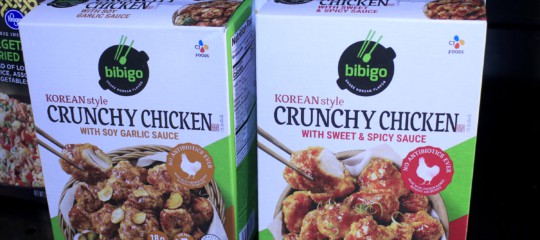Changing consumer habits and preferences are causing a greater interest in a wider variety of fresh and frozen foods. Pharmaceutical companies need to ensure the potency of temperature-sensitive drugs and vaccines. Some components in the tech industry are temperature-sensitive for proper functioning. Increasing globalization means more products are shipped world-wide, with many requiring temperature-controlled environments no matter the distance.
All of this is fueling an increased need and demand for cold (refrigerated or frozen) storage and transportation of food, pharmaceuticals and other temperature-sensitive products to ensure that products reach end users in optimum condition.
The increased demand for frozen food, in particular, is driven by the number of consumers interested in cooking at home, seeking quick, convenient meals, perhaps exploring new international flavors, according to American Frozen Food Institute (AFFI). A recent survey from AFFI shows that more than a quarter of shoppers are buying more frozen fruits and vegetables than three years ago. AFFI also reports a growing consumer market for more healthy and organically sourced frozen foods, more plant-based frozen options, premium or gourmet frozen meal options with responsibly sourced ingredients and innovative flavors, and global ethnic frozen foods.
To handle the increased volume of product requiring temperature-controlled environments, cold storage warehouses that are well-designed and efficiently operated have certain key features, according to Inbound Logistics. They are located with easy access to major transportation networks and designed to minimize loading and unloading times. Their storage capacity, with sections for specific temperature requirements, can be adapted to seasonal or other demands. They have efficient inventory management systems with advanced tracking capabilities and real-time visibility, a reliable power infrastructure, and strong physical security and cybersecurity measures to safeguard products.
There are challenges in cold storage warehousing, as Inbound Logistics indicates. These include maintaining the different temperature requirements for storage of a variety of products and optimizing the use of available space. Implementing well-designed space optimization solutions can have high initial costs and require specialized equipment and training. Power disruptions can also pose challenges, so contingency and response plans must be in place for a quick recovery and minimal losses. Operating a cold storage warehouse can be costly, with high utility bills and labor costs due to specialized training and safety measures for employees. Ways to improve energy efficiency can require hefty initial investment. The cold-temperature environment itself can be challenging in terms of the physical health of employees and the strength of equipment to withstand the cold temperatures.
With 37 years being the average age of cold storage facilities in the top US markets, there is demand for updated functional space supporting new developments in supply chain optimization, warehouse automation and energy cost reduction. Industry sources expect the high demand for cold storage space to continue. They see the booming cold storage market as driving competition for space, with retrofitting of existing space or new projects likely increasing. They describe cold storage operators turning to automation, robotics, IoT, pallet shuttles and more, and focusing on sustainability initiatives as the continuing advancements in technology and storage solution innovations lead to improving efficiency and reducing operation costs.
In terms of the real estate component, US cold storage development reached an all-time high of 9.8 million square feet by the end of 2022, according to real estate company, Newmark. The development is attributed to increased food and grocery e-commerce and the last-mile operations that provide support. These new and smaller operators who can’t find space in existing cold storage facilities are turning to new cold storage providers, including third-party logistics companies, developing the next generation of cold storage space.
In response to the high demand in the market, CJ Logistics is expanding its temperature-controlled warehousing footprint and capabilities. With new, state-of-the art facilities and service-focused operations teams, CJ Logistics will have the space and technology, experience and expertise to address the issues of capacity constraints, aging facilities and outdated technology in the temperature-controlled sector.
CJ Logistics also provides transportation services and trailers for transporting frozen, chilled or temperature-controlled commodities, in Less-than-Truckload (LTL) or Full Truckload (FTL) shipments.
To learn more, contact Matt Brzica, (888) 303-7212 or info@cjlogisticsamerica.com.



